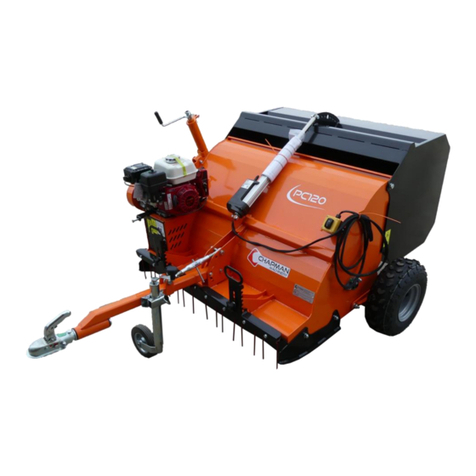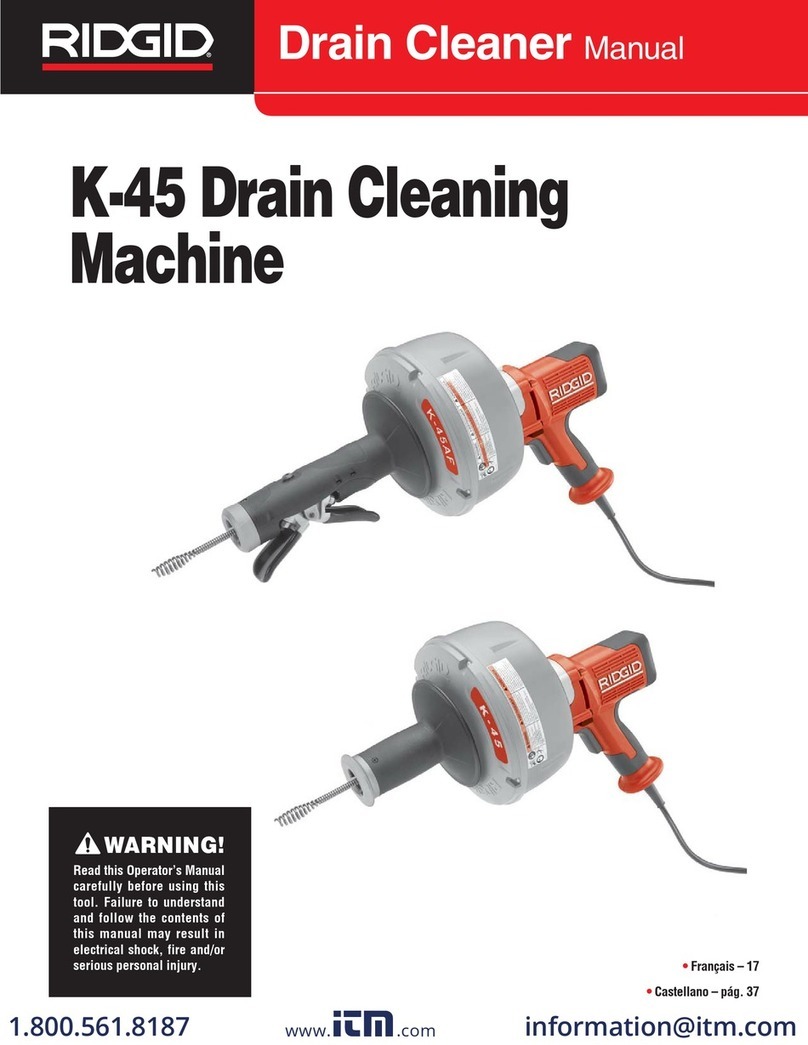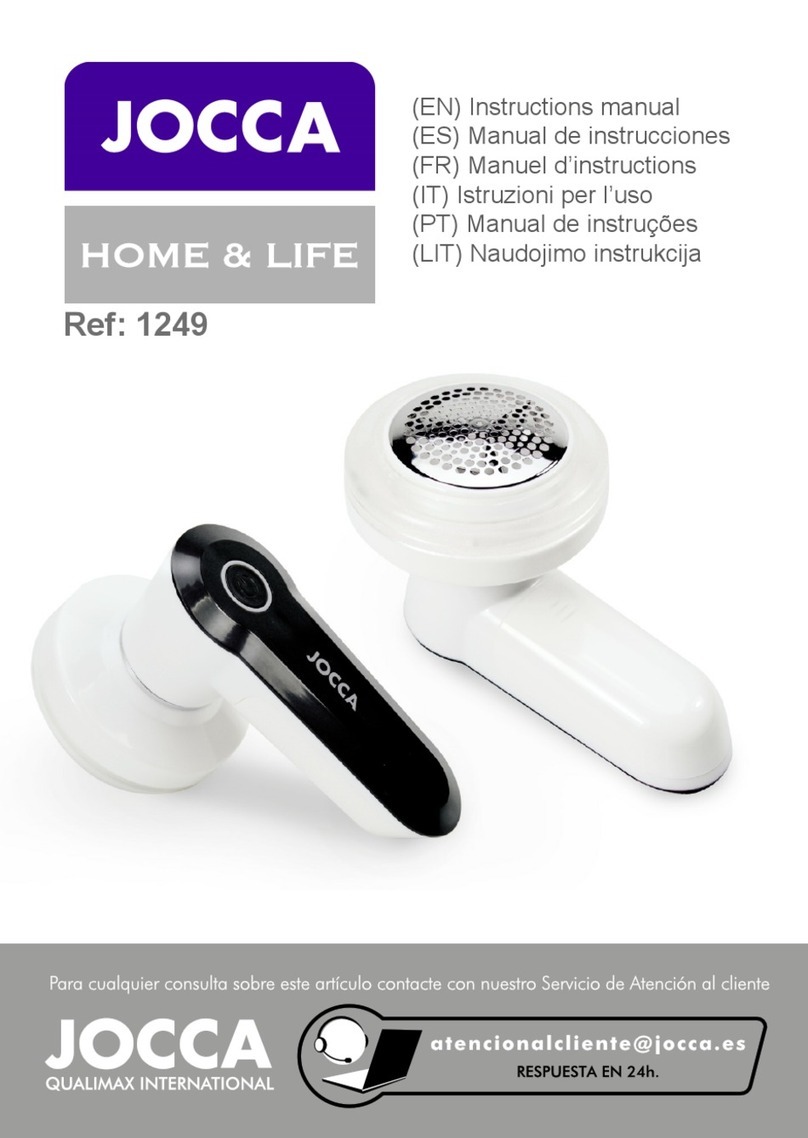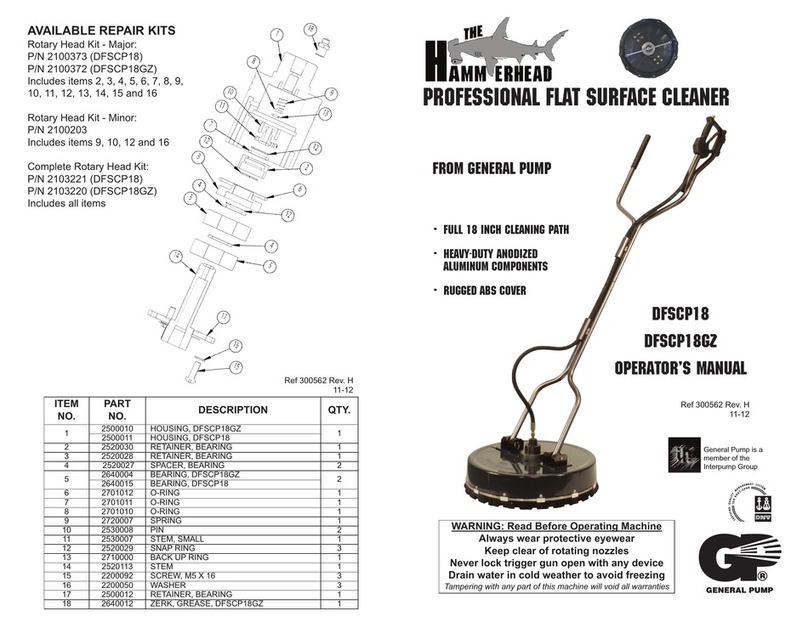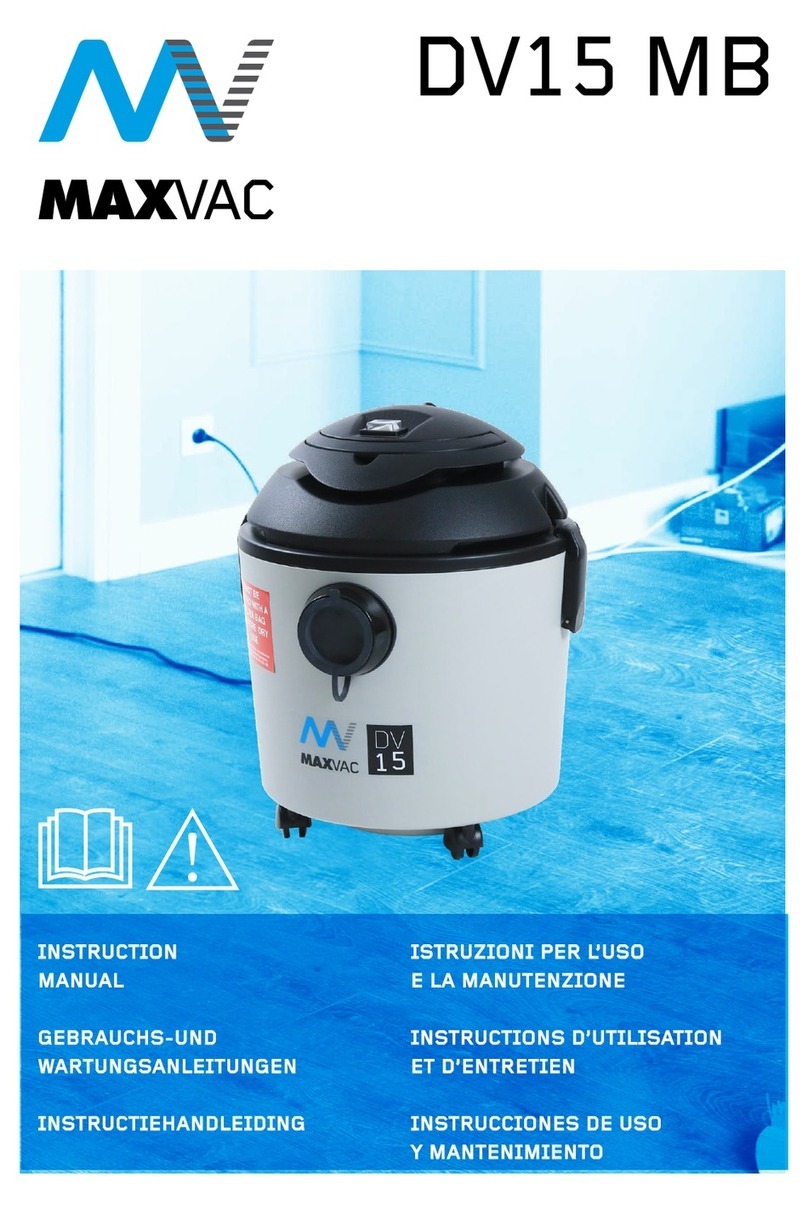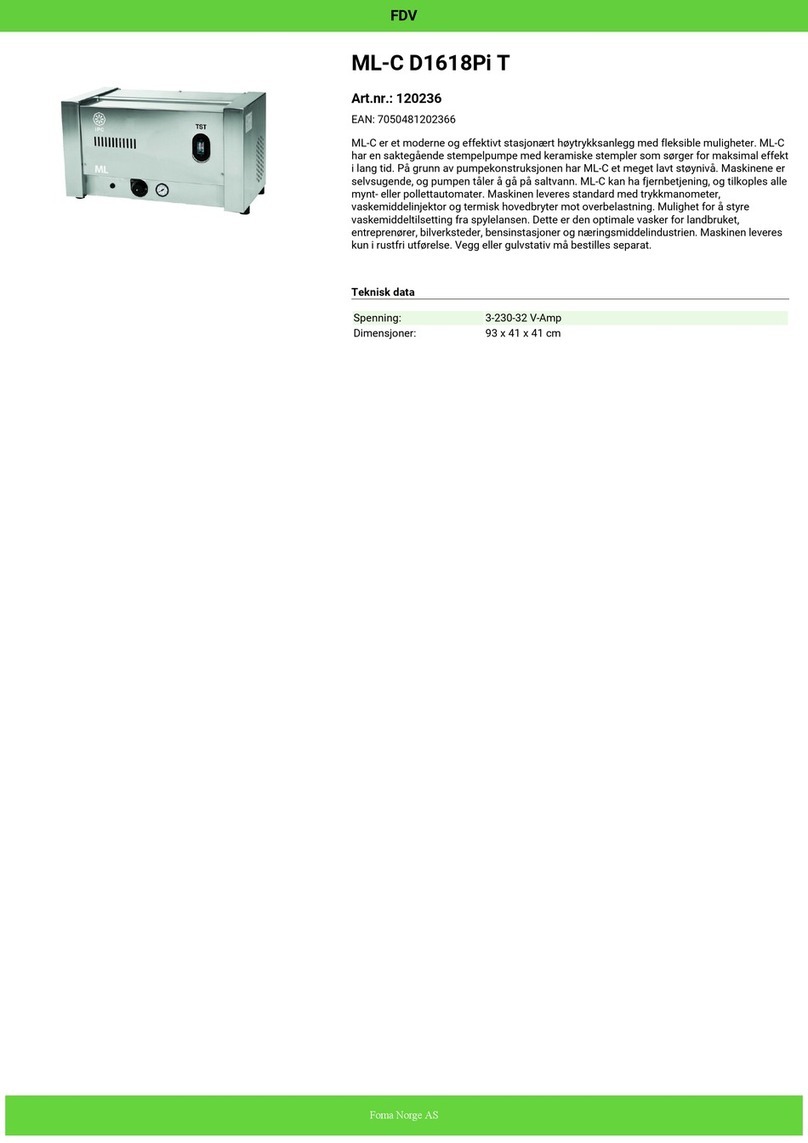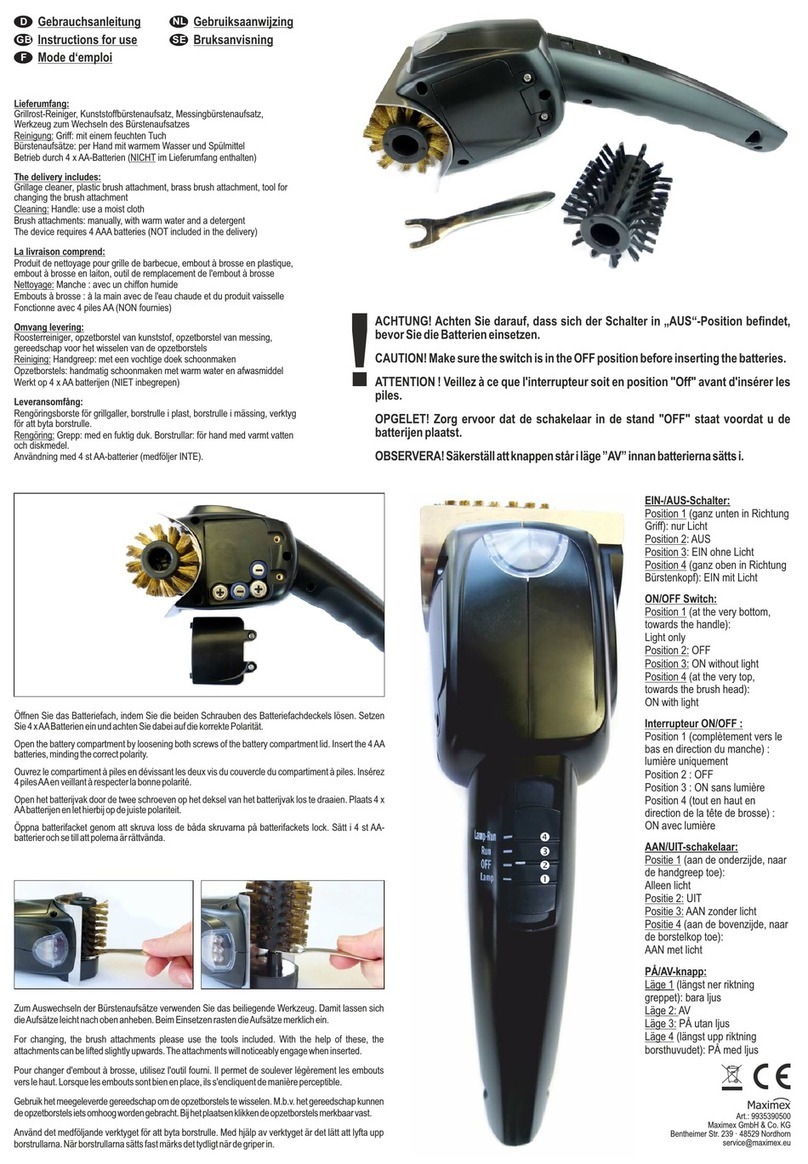Chapman PC Series User manual

English
2
Introduction
THIS MANUAL MUST BE HANDED TO THE OPERATOR BEFORE USE. THE OPERATOR MUST UNDERSTAND FULLY THE CONTENT OF THIS
HANDBOOK BEFORE USING THE MACHINE FOR THE FIRST TIME. OF THE IMPLEMENT IS RESOLD, THIS MANUAL MUST ACCOMPANY THE
MACHINE.
NOTE: The information contained in this manual is correct at the time of going to press. However, in the course of development, changes in
specification are inevitable. Should you find the information given differs from your machine, please contact Chapman Machinery Ltd direct for
advice. Use only Chapman Genuine Service Parts on Chapman Machinery and Machines.
HSE Information
The safe use of all-terrain vehicles (ATVs) & Side by Sides (UTVs) in agriculture and forestry must be adhered to at
all times with machinery attached or not. The HSE information, AIS Sheet 33, gives advice on the safe use of
ATVs/UTVs. It covers the two main types used in off-road working in agriculture and forestry. The Full HSE
information sheet can be found here or using the QR Code to the right https://www.hse.gov.uk/pubns/ais33.pdf and
must be read prior to any ATV/UTV use.
REMEMBER - GET PROPERLY TRAINED AND ALWAYS WEAR HEAD PROTECTION
Important Safety Information
Always read this manual before fitting or operating the machine –whenever any doubt exists contact your
dealer or the Chapman Machinery Service Department for advice and assistance.
•Do not operate this equipment unless you have studied this manual in full
•Only use this machine for its designated task - improper use is both highly dangerous and damaging to machine components
•Both operators & maintenance fitters should be familiar with the machine and fully aware of dangers surrounding improper use or
incorrect repairs
•Before starting, carry out a visual check on both machine & towing vehicle as regards functionality,road safety & accident prevention
rules
•Even when using the machine correctly, accidents can occur. It is imperative that nobody stand withinthe danger area. If working near
roads, buildings or animals, special attention must be taken to ensure safety.
•Never wear loose clothing which could get caught in rotating equipment
•Never carry passengers on the towing vehicle
•Do not stand near the machine when operating
•Damaged or missing safety decals must be replacedimmediately
Transportation Safety
•When transporting, especially over rough ground, reduce speed to prevent damage to machine.
•Ensure ignition keys are removed
•This machine is not road legal. DO NOT tow on public highways
•Never transport the machine with the rotor running, even for small distances.
Operating Safety
•If wires, ropes or chains should become entangled in the rotor stop immediately to prevent damage or dangerous situations; stop the
rotor and the towing machine, take out the starting key or safety cut-out. Put working gloves on; clear the rotor with the aid of pliers or
shears. Do not try to disentangle.
•Pay special attention when working with the machine not to touch fixed objects such as road-drain, walls, shafts, kerbs, guard rails,
tracks etc. This could damage brushes or the machine itself.
•Do not use the machine if excessive vibration is experienced, as this may cause breakage and serious damage - find the cause of the
vibration and eliminate it before using the machine again.

English
3
Description
The PC Series Paddock Cleaner is designed to pick up horse dung and other debris with ease to make paddock maintenance quick and easy. The
PC series are installed with a unique electric tipping mechanism that allows for easy emptying of the hopper by a simple controller.
The PC Series Paddock Cleaner is a trailed attachment that comes in two sizes, 1.2m (PC120) & 1.5m (PC150). 8 Polyethylene brushes in 4 rows
powered by a Honda GX200 6.5hp Engine collect the dung into a large hopper. The engine comes with easy electric start and optional remote
throttle cable, allowing the installation of the throttle on the back of a ATV should it be required.
These machines should however only be used to perform tasks for which they were designed - use of the machine for any other function may be
both dangerous to persons, and potentially damaging to components. Use of the machine beyond the stated usage may invalidate any applicable
warranty, as well as being potential in breach of applicable safety regulations.
Identification
Each machine is fitted with a serial plate (shown below) which details the
following:
1. Model
2. Date of Manufacture (DOM)
3. Serial Number
4. Mass
When enquiring regarding spares or additional equipment, ensure you have
this information to hand.
Noise Levels
The sound of this machine, as measured at the typical operator location under normal operating conditions, is 91db. If being towed by an open-
cab vehicle, it is essential that ear defenders or a suitable helmet is worn at all times. If being towed behind a closed-cab UTV, 4x4 or similar, then
the cab should remain closed to reduce noise. It is the operators responsibility to ensure that noise levels experienced by the operator are within
legal limits.
Implement Decals
If your implement does not contain all of the decals shown below, please contact
your equipment supplier for replacement decals before use.
Note: All decals must be present and visible. It is imperative that these are replaced
if damaged to prevent potential harm to users.
WARNING - Read operators
manual before handling this
machine. Observe in
structions and safety rules
when operating
CAUTION - Entanglement
Hazard. Keep hands away
from rotating components
CAUTION - Rotating blades.
Maintain sensible working
distance from machine and
keep hands and feet clear of
blades
CAUTION - risk of trapping.
Keep hands away from
machine when in operation
EAR DEFENDERS OR EQUIVALENT HEARING PROTECTION DEVICES SHOULD BE WORN
AT ALL TIMES WHEN OPERATING THIS EQUIPMENT!

English
4
Initial Assembly of the Machine (if applicable)
If delivered from a local distributor, the PC Series should be fully assembled, PDI’d & ready to go. For some customers the PC120 is shipped direct
from the factory, with the machine standing vertically on the pallet for ease of transport. Please follow instructions below for initial assembly.
Drawbar
Tools required: 17, 19 & 24mm Spanners
1. Lower the Paddock cleaner gently down with
supports beneath the black skid plates.
2. Remove the three bolts from the drawbar mount
(shown below), taking note of the number and
location of washers so that they are fitted in the
correct number on re-assembly.
3. Next, install the REARMOST M12 bolt to the bottom
rear of the drawbar mount by offering up the
drawbar, inserting the bolt and fitting the washers
and nut loosely.
4. Next, install the FRONTMOST M12 bolt & nut in
the slot at the front of the drawbar mount, again
fitting washers and nuts loosely
5. Supporting the weight of the drawbar, lift up until the
drawbar adjuster is in-line with the last M16 bolt at the top of
the drawbar mount, installing washers and nuts loosely..
There should be one aluminium spacing bush either side of
the adjuster itself (not shown in picture).
6. Tighten the top M16 bolt and nut using 24mm spanners
such that it secures the assembly without distorting the
orange drawbar mount inwards. Likewise the 2 x M12 bolts
need to be tightened to a sliding fit using 19mm spanners
so that the drawbar mount is not distorted inwards and it
can move freely when the height adjuster is rotated
7. Lastly, install the Jockey wheel by unwinding the clamp, insert the jockey wheel into the clamp and tightening securely.

English
5
Component Identification / Labelling
For standard PC Series, the engine controls are all located on the engine, and detailed within the Honda engine manual.
For machines with the optional remote throttle fitted, all controls EXCEPT the throttle are as per the standard Honda engine. The throttle on the
remote throttle option machine can only be actuated from the remote throttle, and not on the engine itself.
1) Height Adjuster
2) Hopper
3) Petrol Tank
4) Control Box
5) Electric Actuator
6) Adjustable Tines
7) Battery Box
8) Drawbar
BELT
COVER
1
\
2
\
4
\
5
\
3
\
7
\
6
\
8
\
This manual suits for next models
2
Table of contents
Languages:
Other Chapman Ultrasonic Jewelry Cleaner manuals

